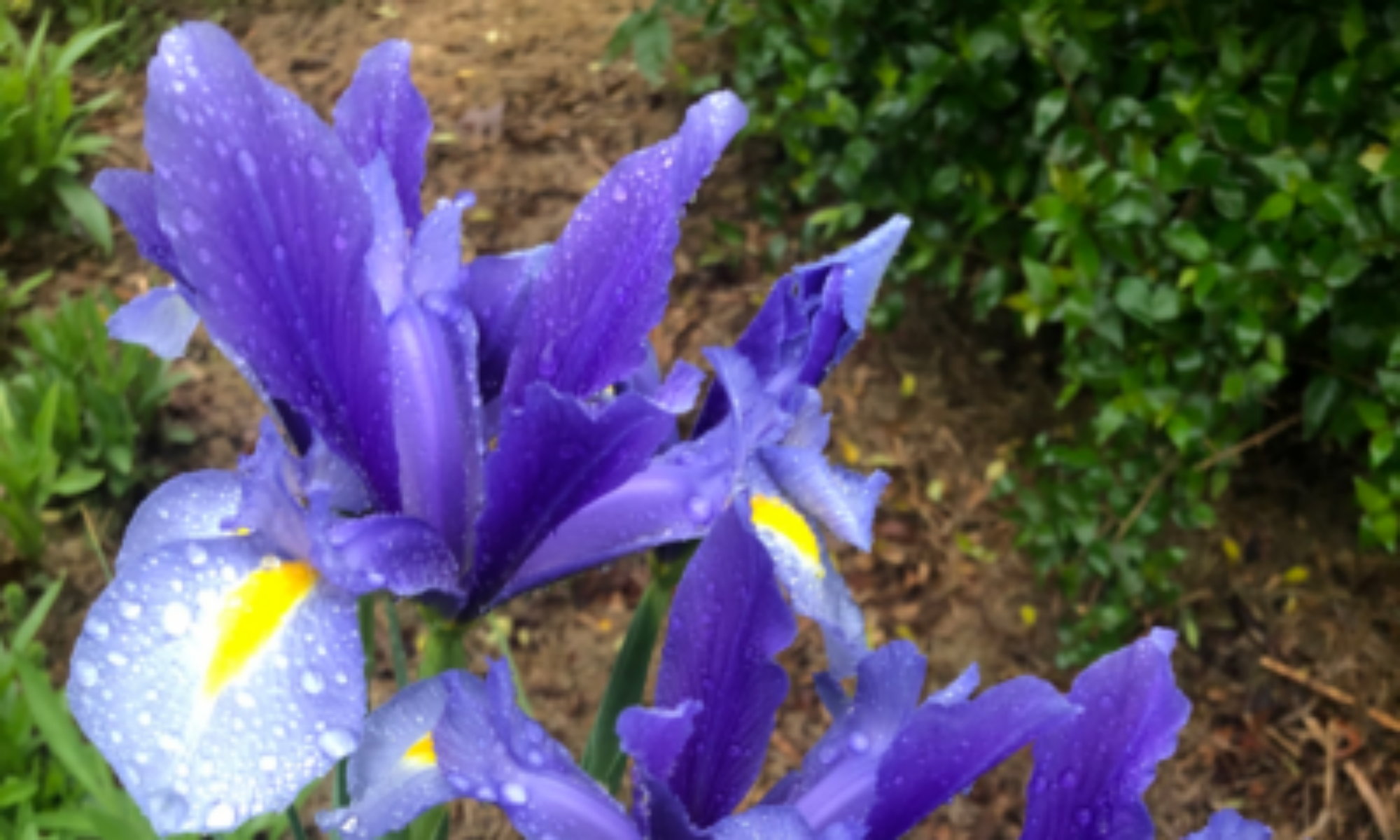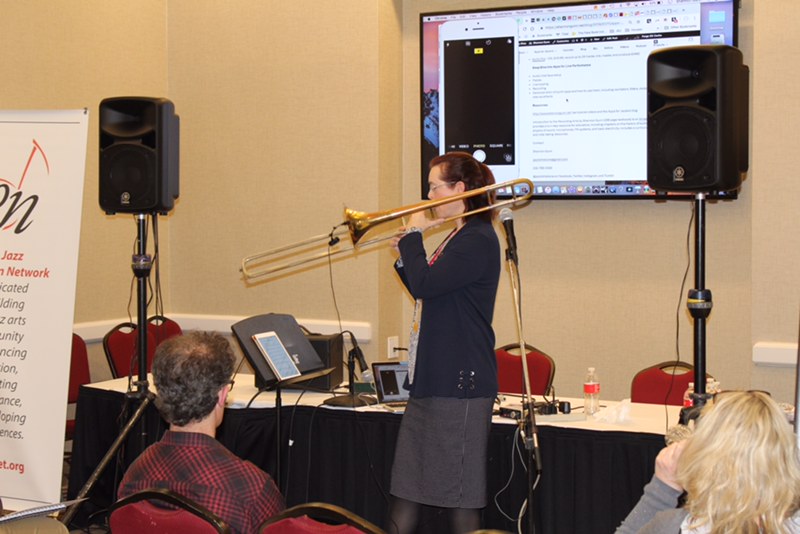Below are brief descriptions of Shannon Gunn’s clinics:
1. Apps for Jazzers
This presentation goes over the top 10 apps every musician should have with a deep dive into synthesis, loops, pedals, processing, and recording at the end. 45 – 50 minute session outline includes:
- Utilities (tuner, metronome, iReal, iGigBook, payment apps, scanning)
- Sheet music/set lists, including sharing within a band and turning pages across devices
- Notation
- Transcribing
- Band directing apps, including theory, ear training, pedagogy and inspirational apps
- Lead sheet resources
- Pedals/Effects
- Synths
- Looping
- Recording
Deep dive into Apps for Live Performance:
- Audio interface setup
- Pedals
- Live Looping
- Recording
- Demonstration of synth apps and how to use them, including oscillators, filters, modulators and internal effects
Advanced Apps for Jazzers also includes:
- Audio versus MIDI
- Audiobus
- MIDI controlled apps, including synths, loops, and how to link apps together and control them separately
Note: The presentation is constantly evolving to match the needs of musicians and advances in technology. You can view the JEN 2019 Presentation PDF handout here: https://www.shannongunn.net/blog/2019/01/11/apps-for-jazzers-2019/
2. Apps for Musicians
This is a take-off presentation geared toward all musicians and is tailored to the audience at hand. Example outline:
- Utilities (tuner, metronome, scanning, notes, practicing)
- Sheet music/set lists, including sharing within a band and turning pages across devices
- Notation
- Music assessment using technology (warm up activities, documenting student progress)
- Band directing apps, including theory, ear training, pedagogy and inspirational apps
- Recording
- Synthesizers
- Composition (beats, loops, MIDI)
3. Gain Staging
Have you ever wondered how to get rid of the “hiss” in your speakers? Spend an hour learning about the art of gain staging for pristine audio quality in live performance and recordings. This presentation also includes an overview of line level versus mic level with an emphasis on protecting and maintaining your audio gear.
4. History of Jazz Styles
This presentation is designed as a “play along” clinic. Listen to the great big bands of each era and then play their music appropriate to the style of that time. Learn how to perform stylistically correct despite notation or engraving standards of that time period, and how instrumentation changed over the years. Finally, learn how each style correlated to different dances of that era, until bebop. Requirements: big band with instruments, music stands, 1 hour, some sheet music printed (negotiated before hand), sheet music will be sent over in advance that fills in the library gaps
- 1920s eleven piece big band, Fletcher Henderson, Paul Whiteman, Bennie Moten, Duke Ellington and his 10 Blackberries
- 1930s swing, Glenn Miller (Fletcher Henderson), Tommy Dorsey, Chick Webb
- Early Duke Ellington vs. early Count Basie styles
- 1940s swing, including the rise of big band vocalists
- The Bebop big band style
- Late Count Basie big band arrangers and style
- Birth of the Cool, Claude Thornhill, Gil Evans, Tadd Dameron
- Stan Kenton and progressive style
- Modern big bands, Thad Jones, Charles Mingus, Carla Bley, Gordon Goodwin (plus delineating how these bands are different stylistically than the earlier bands)
- East coast vs. West coast styles of today
You can see an example of an “informance” of the various styles of big band music by viewing the Millenium Stage performance by Shannon Gunn and the Bullettes at the Kennedy Center: https://www.youtube.com/watch?v=A7lV1cZe09k&t=85s
5. DIY Album Start to Finish Multi-Week Residency
It is Shannon’s philosophy that any student who wishes to perform music for a living should have the skills to record, mix, master, and produce their own album or EP before graduating. This clinic would have to take place over an intensive residency or could be stretched over a year. Shannon has ten years experience teaching students to record themselves, mix, master and produce their own albums, including marketing and getting their community behind their product. Students would learn to record with the gear they have on hand, including tablets, PCs, Macs, software, and borrowed microphones. Students would learn how to record, mix, master, duplicate, market, and clear copyright for their EP. They will walk out of the project with a demo in hand they can use to procure gigs and auditions. This is an intensive project and all terms would be negotiated up front for a seamless execution. Note: this workshop is for acoustic ensembles only, and would work best for duos, trios, and quartets. (Not for rock groups.)
Hear the quality of Shannon’s producing on her Bandcamp page, where she has recorded, mixed, mastered, and produced her five albums: https://bullettesjazz.bandcamp.com/
Note: The albums “What it Takes” and “Bullettes and Friends” were tracked in a studio and then mixed/mastered by Shannon. The songs “Aardvark,” “In Walked Allyn,” and “Fearon” were also partially mixed by Blaine Misner at Cue Studios in Falls Church, VA.

